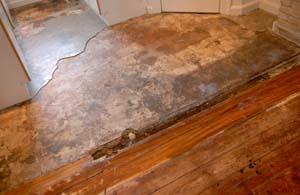Do's & Don'ts of Water Restoration.
Do's & Don'ts of Water Restoration.
Blog Article
How do you actually feel about How To Prevent Fire And Water From Ruining Your Holiday Season?

Water provides life, water breach on parts where it's not supposed to be can result in damage. If the water saturates right into your framework, it can peel away surface areas and deteriorate the structure. Mold and mildew likewise grow in a damp atmosphere, which can be harmful for your health. Residences with water damages scent stuffy and old.
Water can originate from lots of sources such as tropical storms, floodings, ruptured pipelines, leaks, and also sewage system issues. In case you experience water damages, it would certainly be excellent to know some safety precautions. Here are a few guidelines on just how to take care of water damage.
Do Prioritize Residence Insurance Coverage Protection
Water damages from flood dues to hefty winds is seasonal. You can additionally experience an abrupt flood when a defective pipeline suddenly ruptures into your house. It would certainly be best to have home insurance policy that covers both acts of God such as all-natural disasters, and emergencies like broken plumbing.
Don't Forget to Turn Off Energies
This reduces off power to your entire residence, preventing electric shocks when water comes in as it is a conductor. Do not neglect to transform off the main water line valve.
Do Remain Proactive as well as Heed Climate Notifies
Pay attention to evacuation warnings if you live near a lake, river, or creek . Doing so minimizes possible building damages.
Don't Disregard the Roof
Prior to the climate turns frightful, see to it you have a roof examination. As a matter of fact, it would be prudent to get this solution yearly as it can alleviate complicated issues. You can avoid rain damage if there are no openings and also leakages in your roof. Your roofer will also take care of faulty seamless gutters or any other signs of weakening. This will certainly prevent water from moving down your wall surfaces and saturating your ceiling.
Do Take Note Of Small Leakages
A burst pipe doesn't take place over night. Usually, there are red flags that suggest you have actually damaged pipelines in your home. As an example, you might see bubbling paint, peeling wallpaper, water streaks, water stains, or leaking noises behind the walls. At some point, this pipe will burst. Ideally, you should not wait for things to escalate. Have your plumbing fixed prior to it leads to large damages.
Do Not Panic in Case of a Burst Pipeline
Keeping your presence of mind is essential in a time of crisis. Worrying will just worsen the trouble due to the fact that it will stifle you from acting fast. When it pertains to water damages, timing is crucial. The longer you wait, the even more damages you can expect. Hence, if a pipe bursts in your residence, right away turned off your main water shutoff to cut off the source. After that disconnect all electric outlets in the area or shut off the circuit breaker for that part of your house. Call a trusted water damages restoration expert for help.
Water gives life, water intrusion on parts where it's not meant to be can result in damages. Homes with water damage odor moldy and also old.
Water damage from flood dues to hefty winds is seasonal. You may discover bubbling paint, peeling off wallpaper, water streaks, water discolorations, or dripping audios behind the wall surfaces. When it comes to water damages, timing is vital.
Some Do's & Don't When Dealing with a Water Damage
DO:
Make sure the water source has been eliminated. Contact a plumber if needed. Turn off circuit breakers supplying electricity to wet areas and unplug any electronics that are on wet carpet or surfaces Remove small furniture items Remove as much excess water as possible by mopping or blotting; Use WHITE towels to blot wet carpeting Wipe water from wooden furniture after removing anything on it Remove and prop up wet upholstery cushions for even drying (check for any bleeding) Pin up curtains or furniture skirts if needed Place aluminum foil, saucers or wood blocks between furniture legs and wet carpet Turn on air conditioning for maximum drying in winter and open windows in the summer Open any drawers and cabinets affected for complete drying but do not force them open Remove any valuable art objects or paintings to a safe, dry place Open any suitcases or luggage that may have been affected to dry, preferably in sunlight Hang any fur or leather goods to dry at room temperature Punch small holes in sagging ceilings to relieve trapped water (don't forget to place pans beneath!); however, if the ceiling is sagging extremely low, stay out of the room and we'll take care of it DO NOT:
Leave wet fabrics in place; dry them as soon as possible Leave books, magazines or any other colored items on wet carpets or floor Use your household vacuum to remove water Use TV's or other electronics/appliances while standing on wet carpets or floors; especially not on wet concrete floors Turn on ceiling fixtures if the ceiling is wet Turn your heat up, unless instructed otherwise

Hopefully you liked our section about Safety Tips To Prevent Fire And Water Damage. Thank you for spending some time to read our content. Sharing is good. Helping others is fun. Bless you for your time. Please check up our site back soon.
Report this page